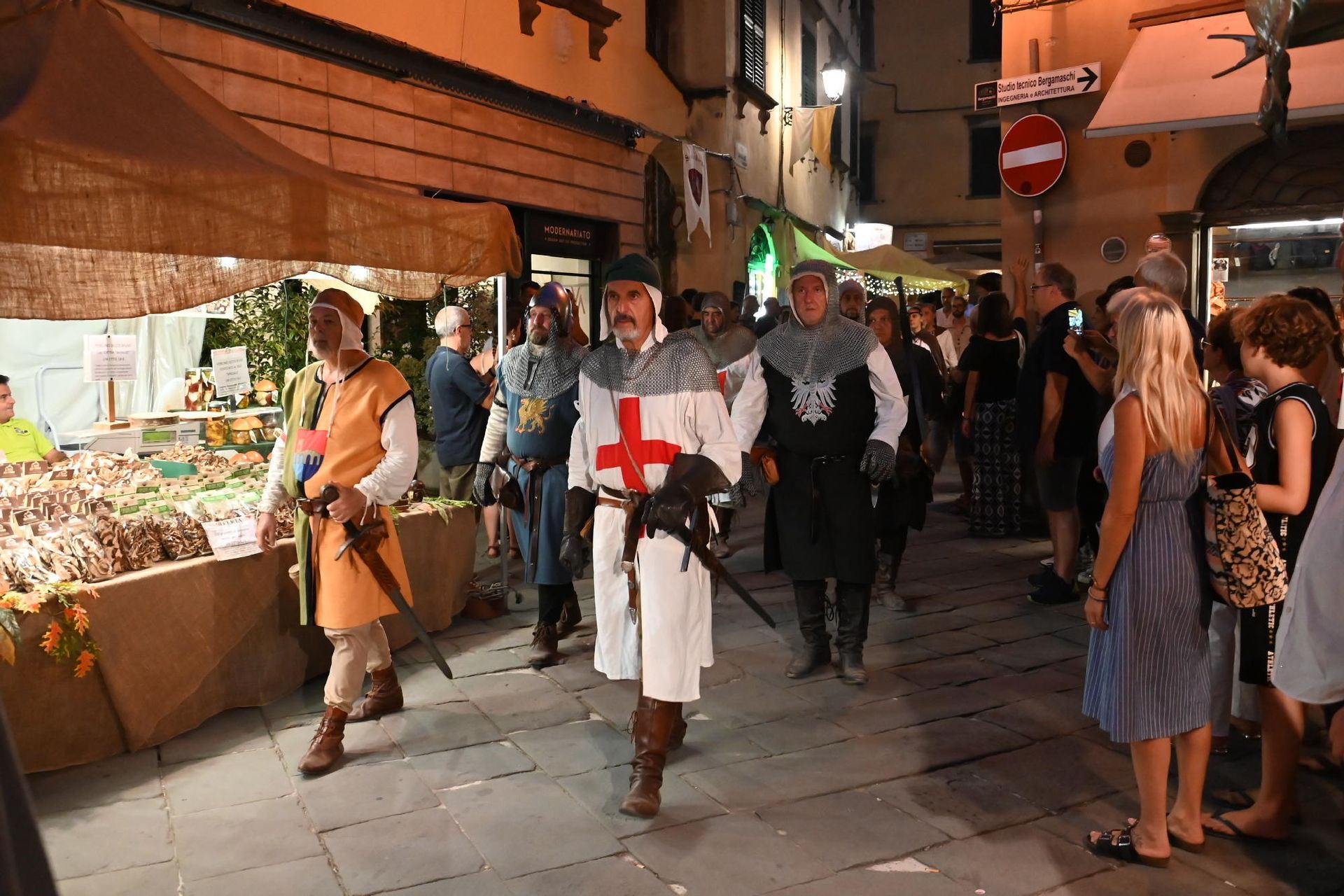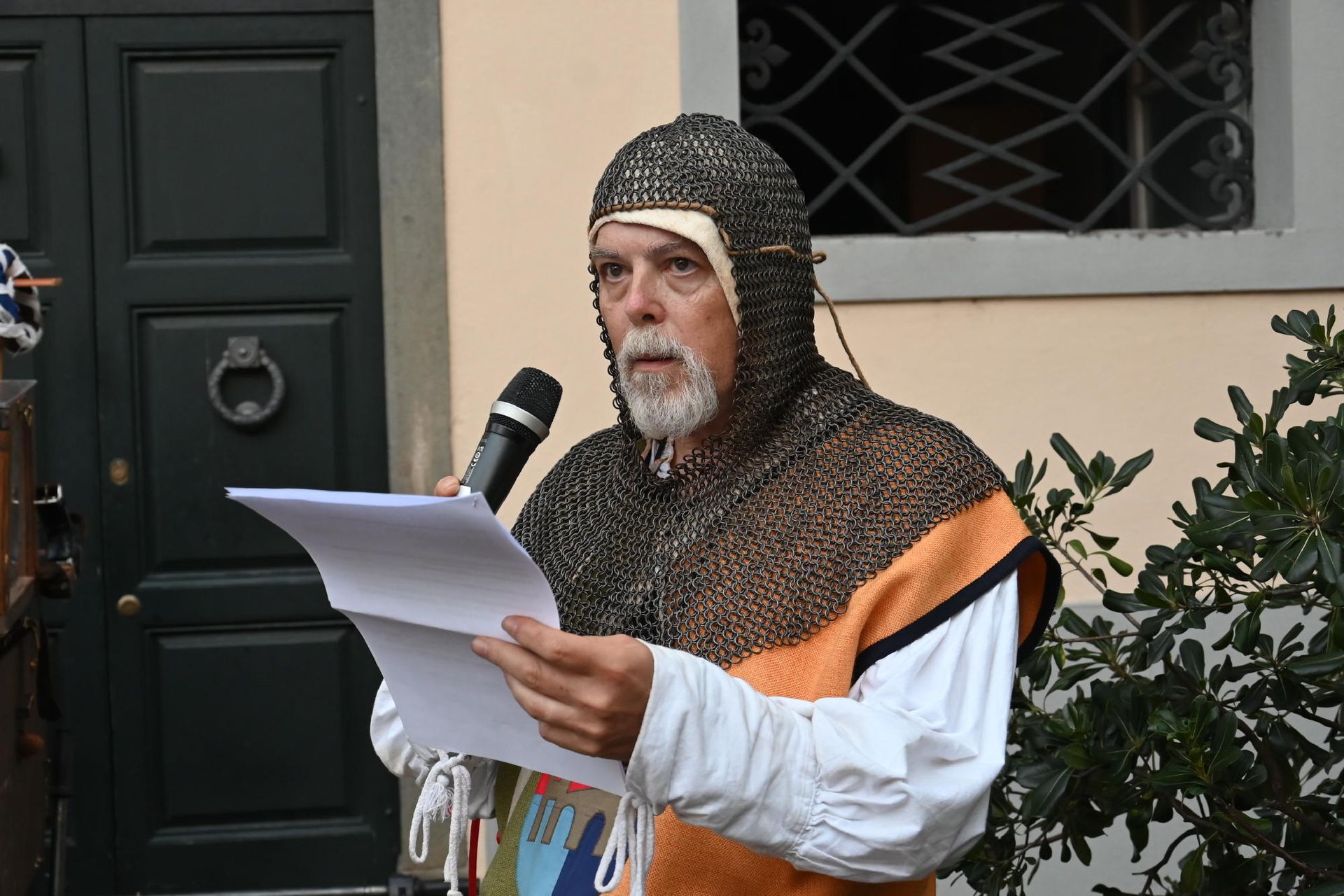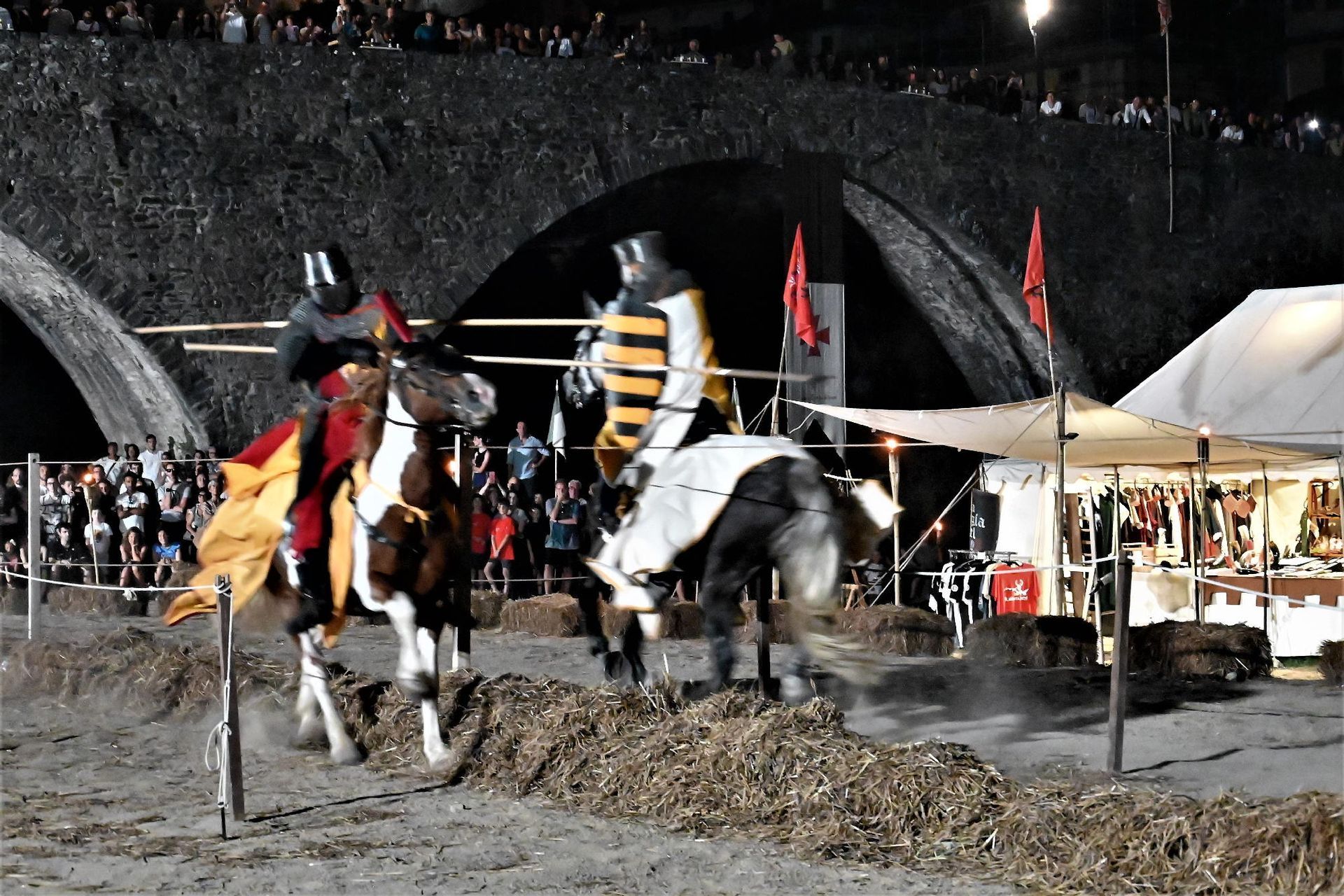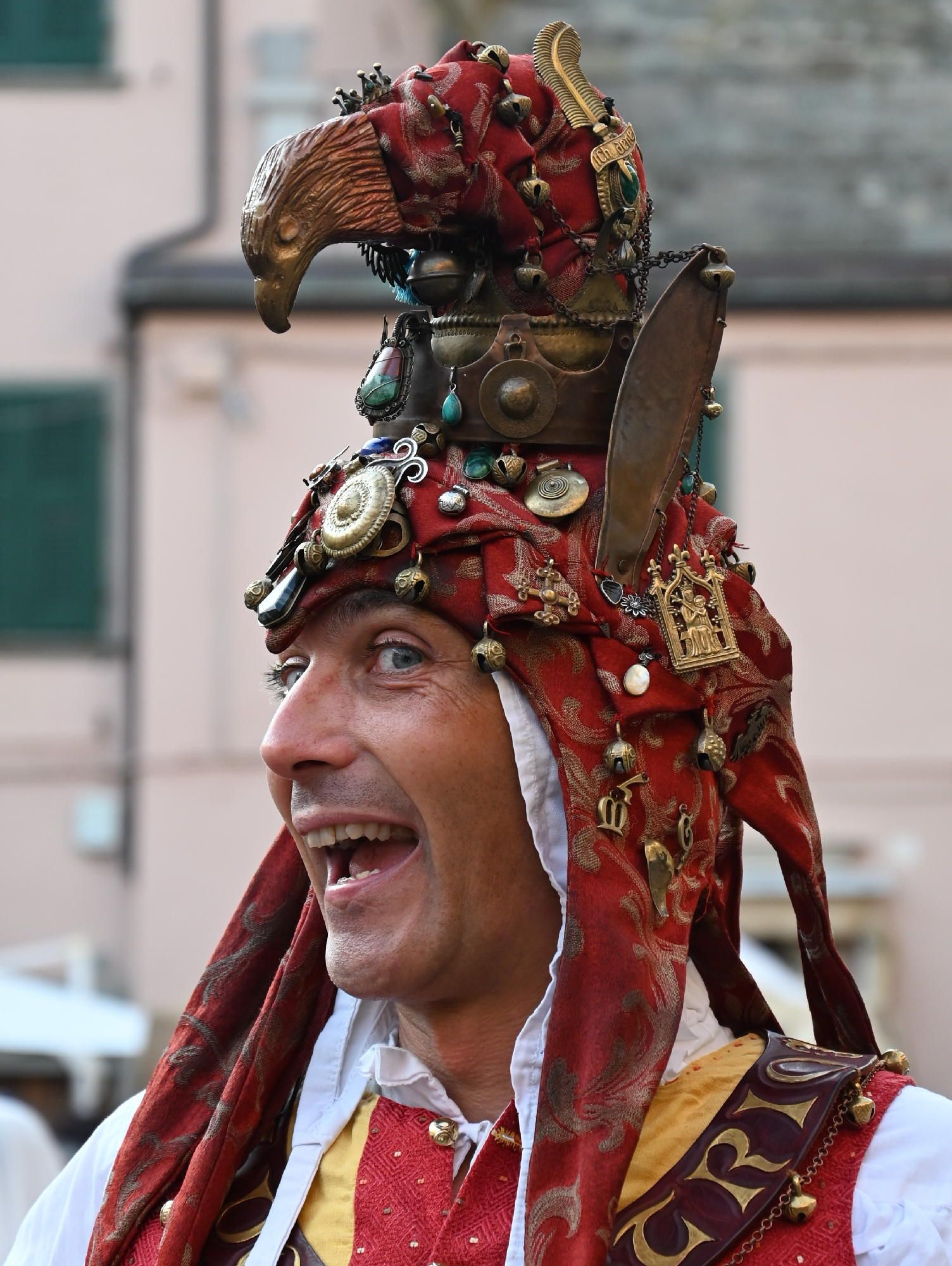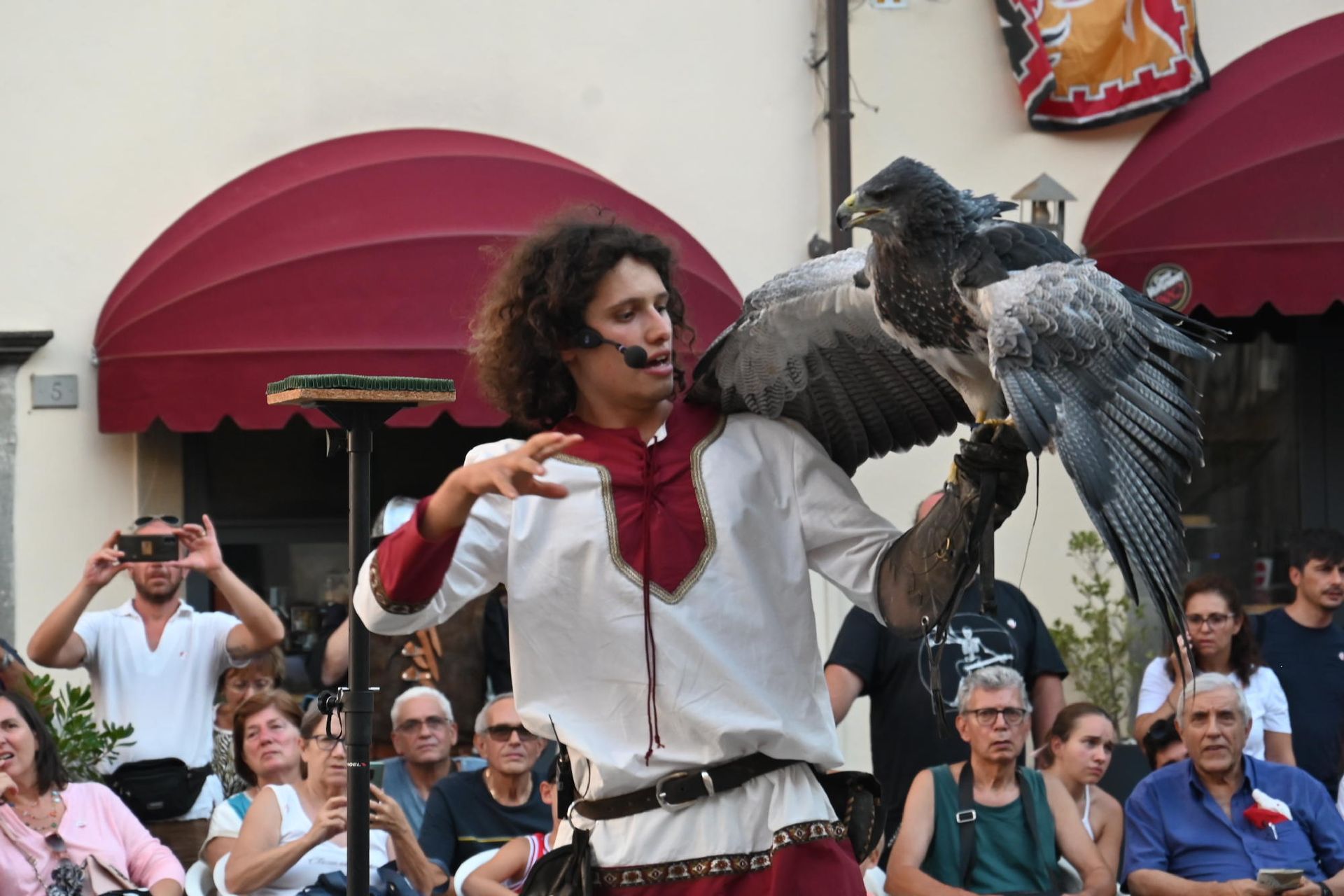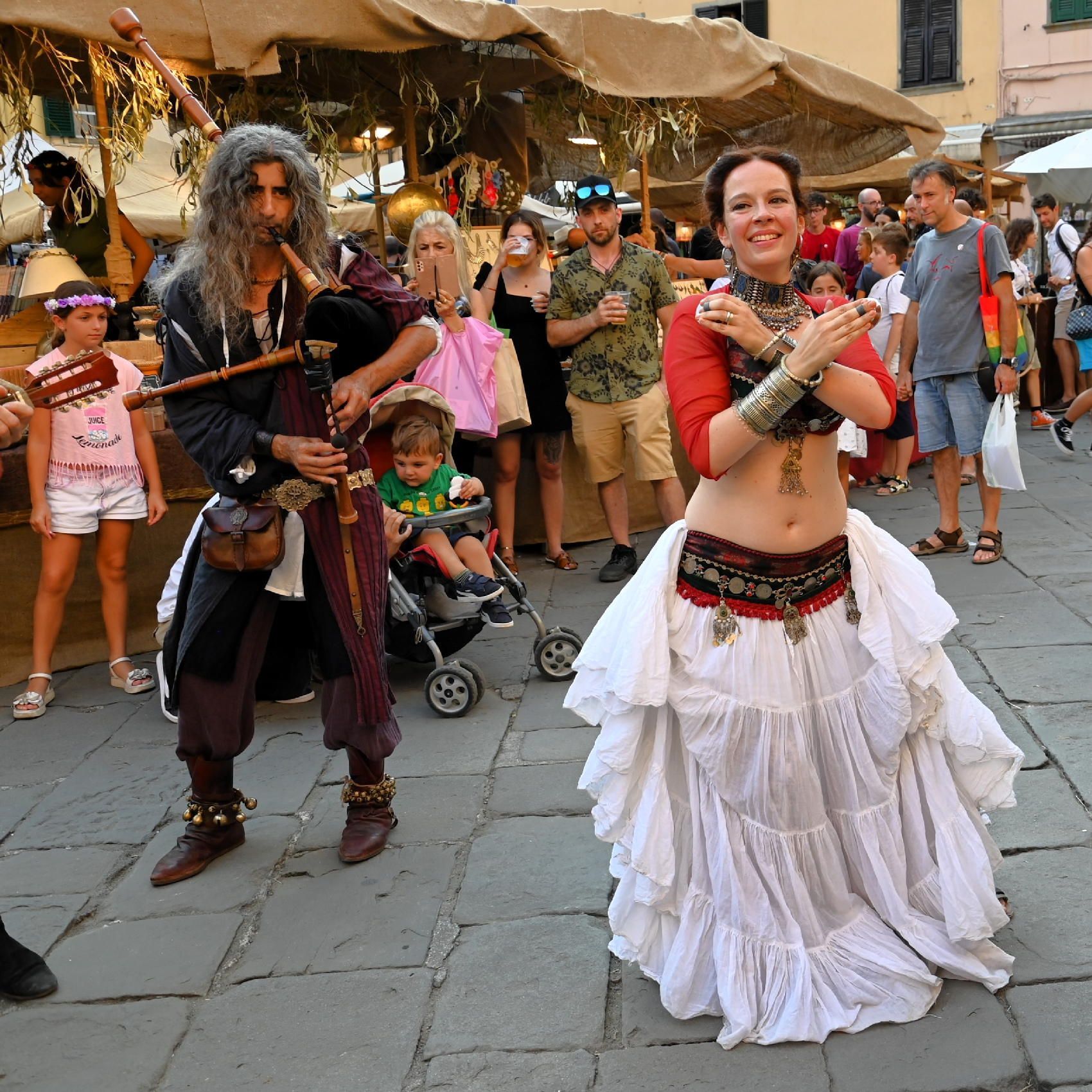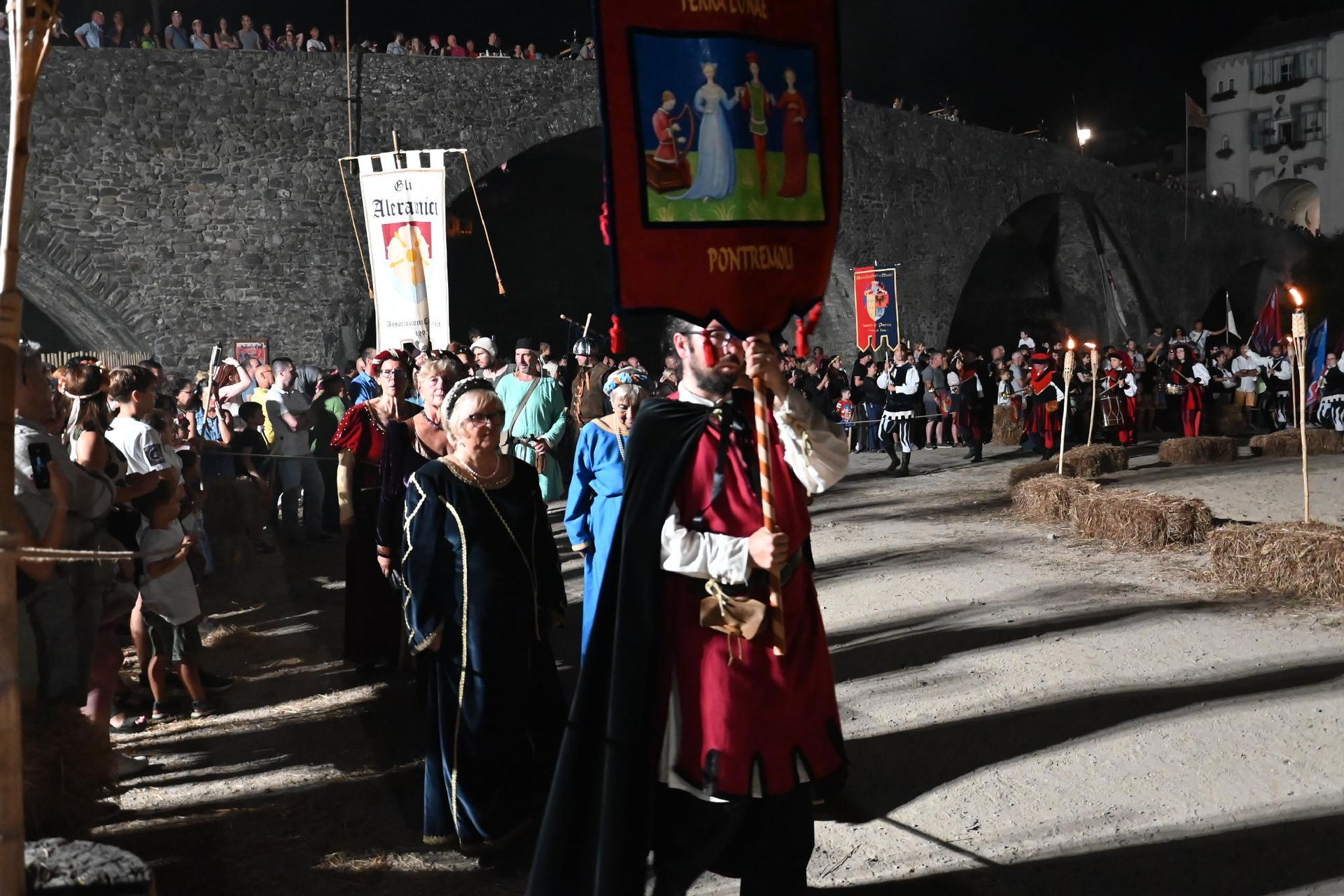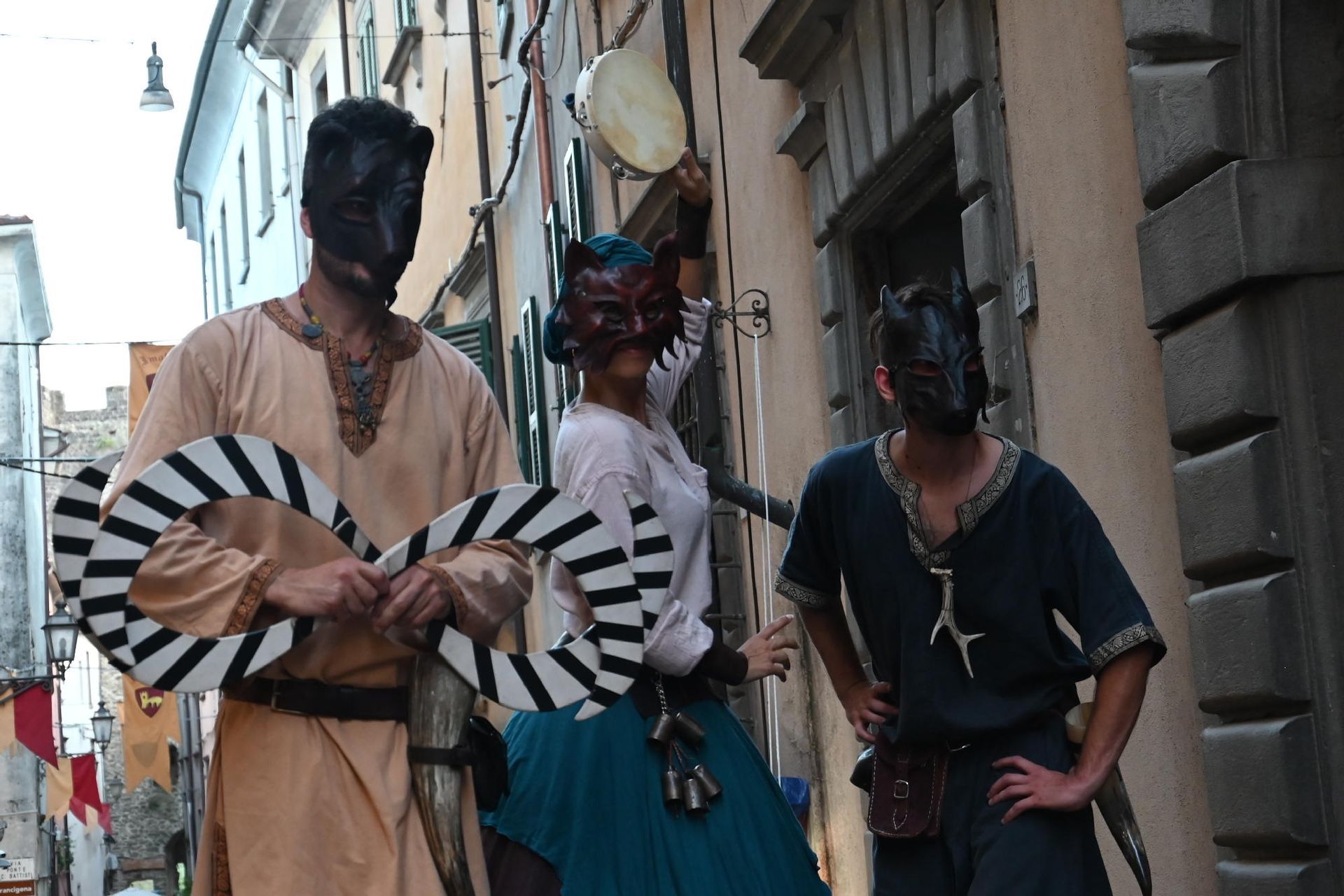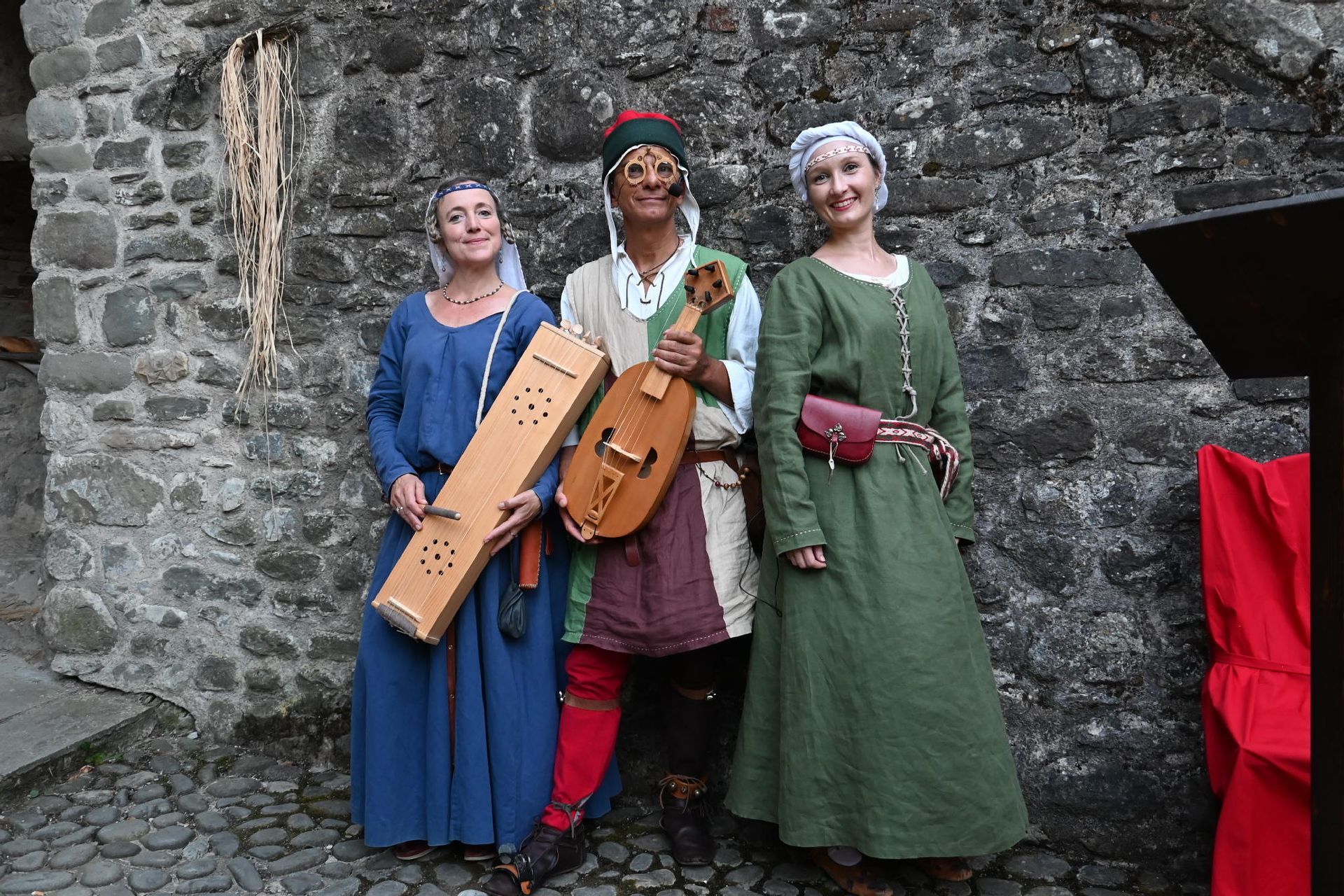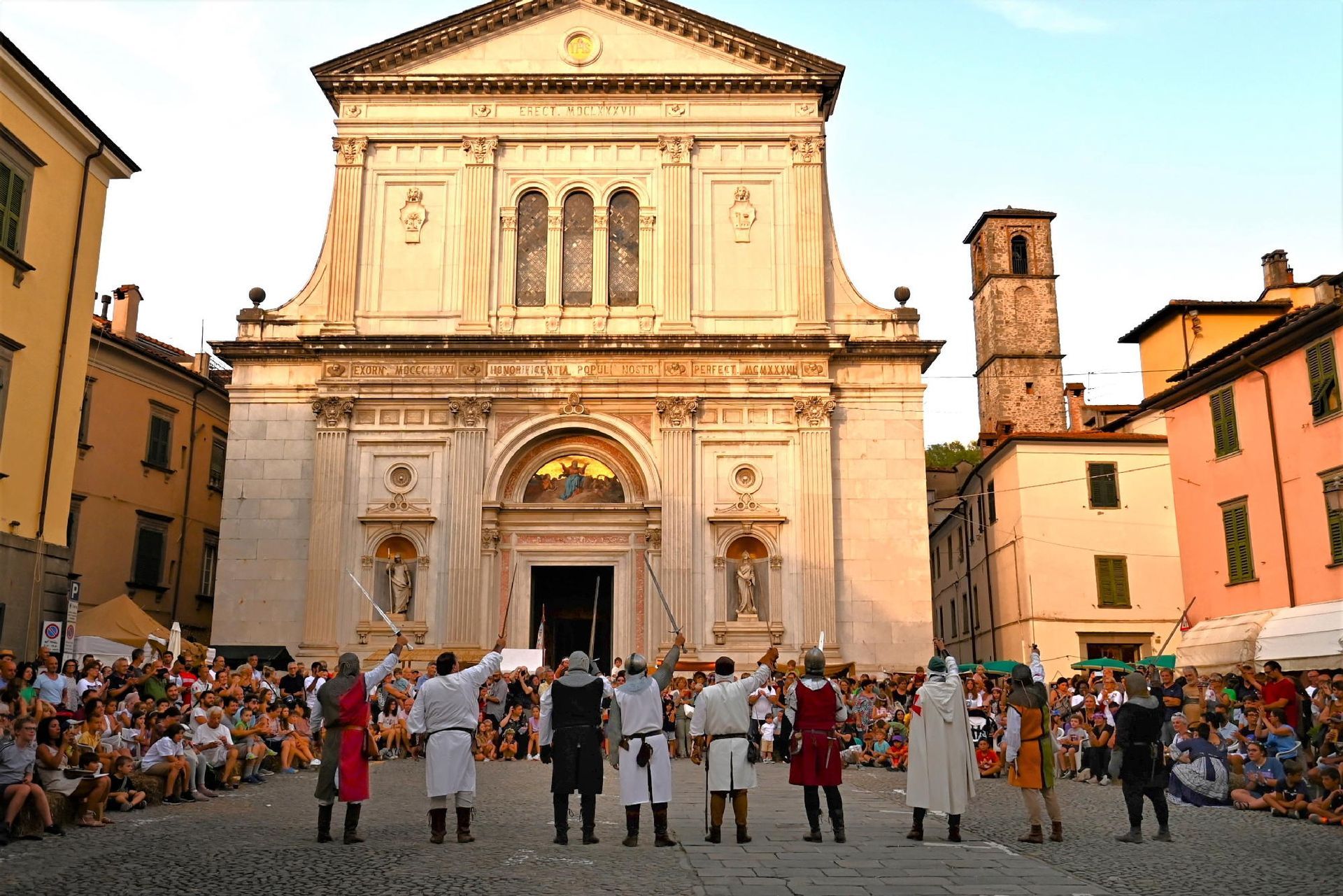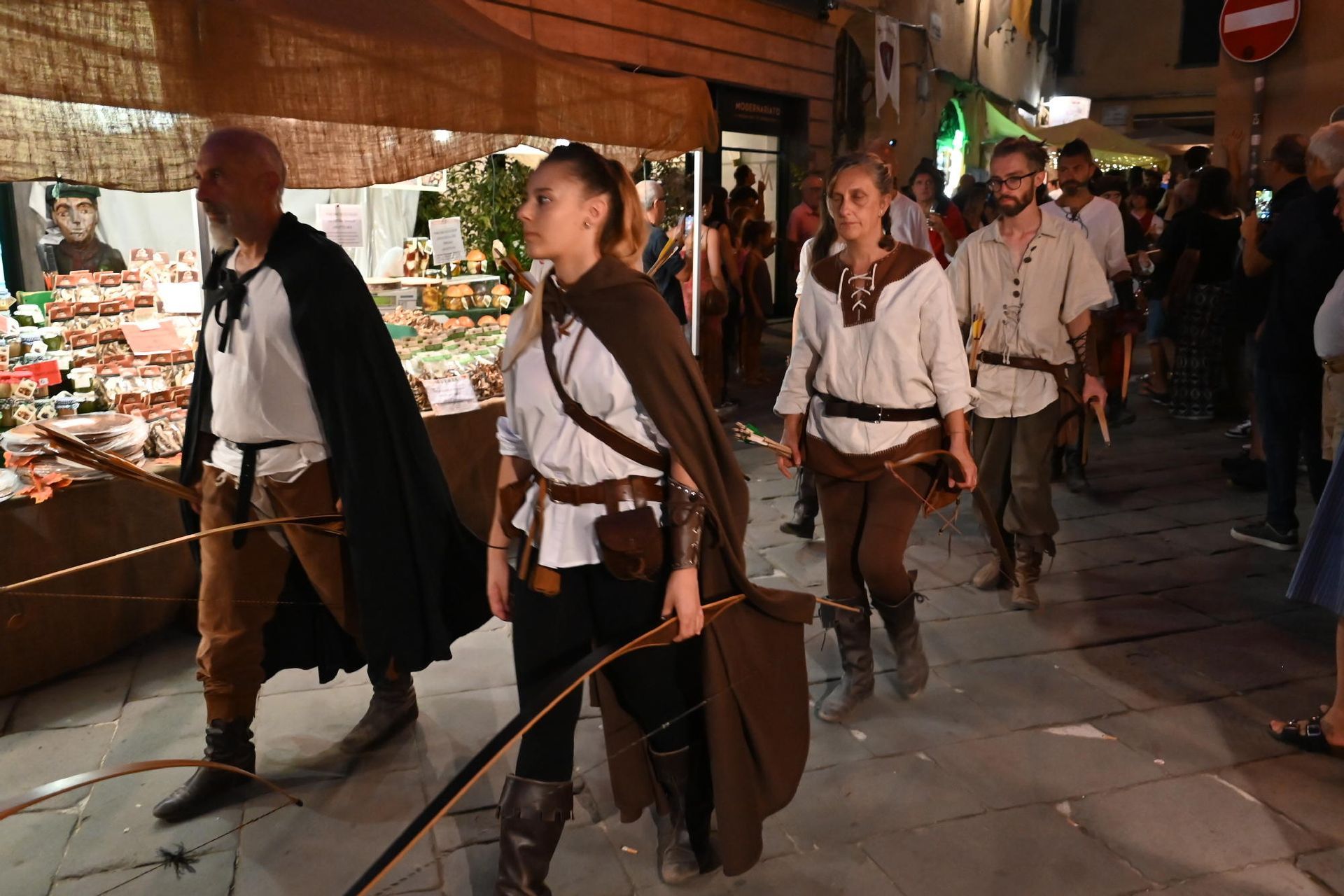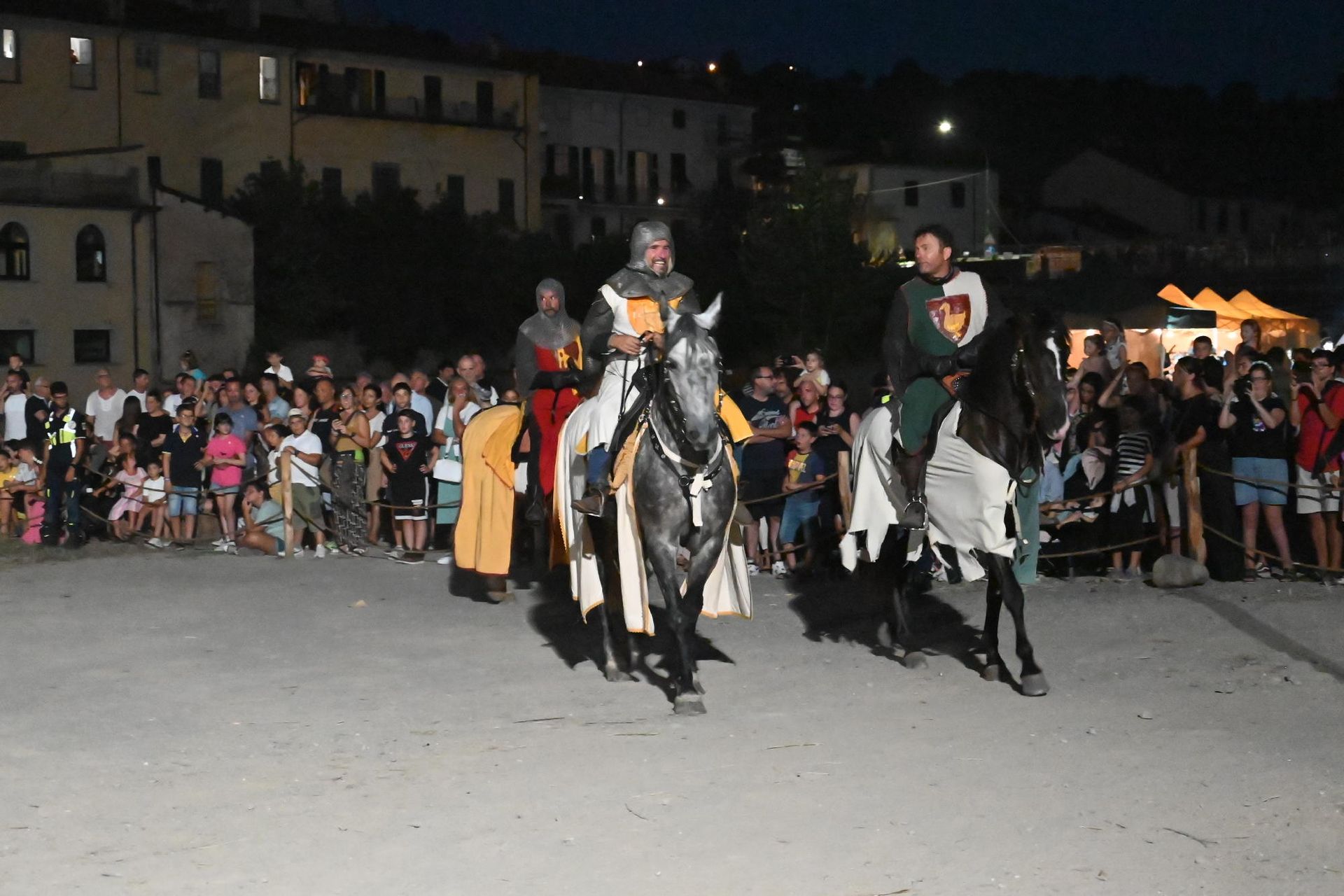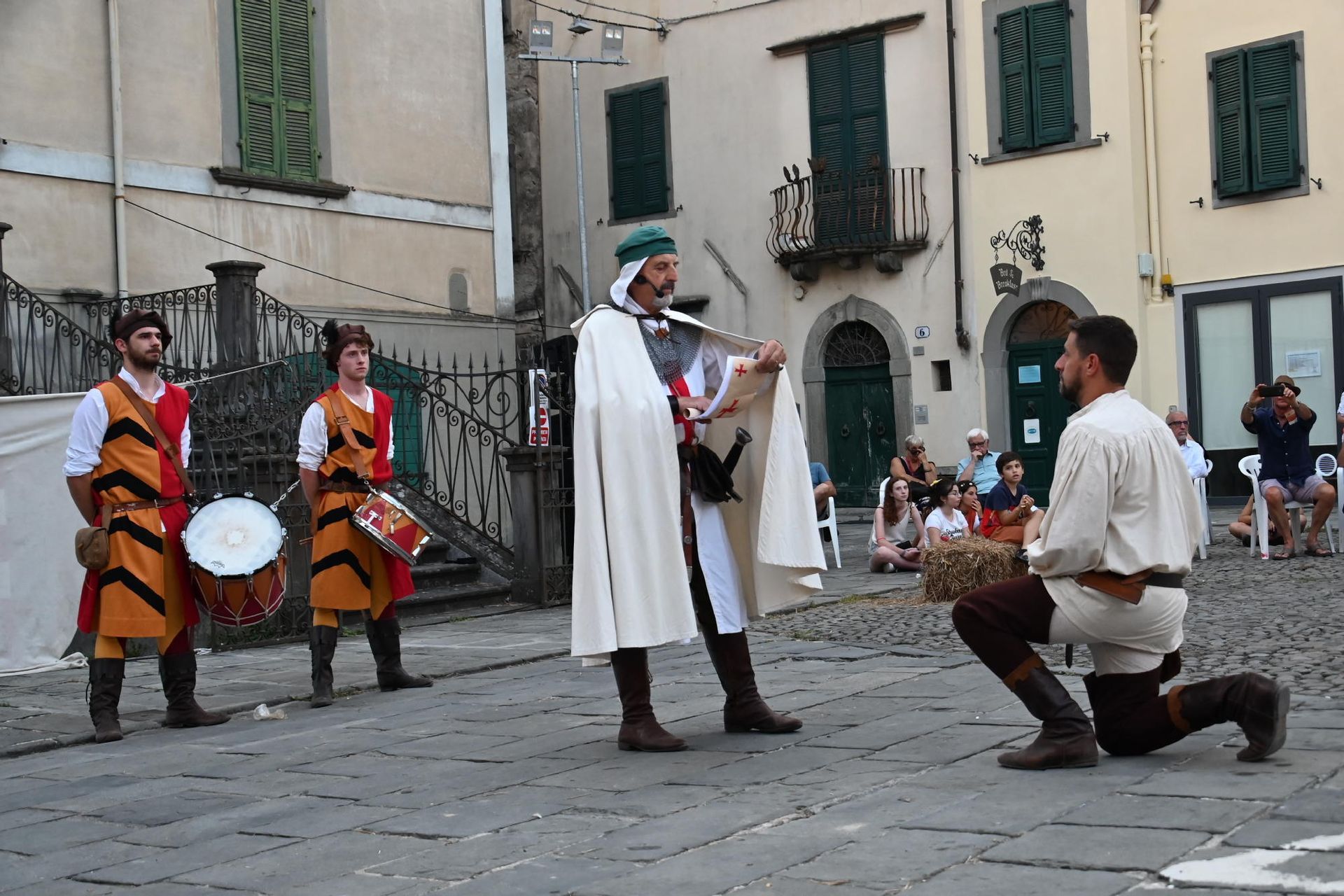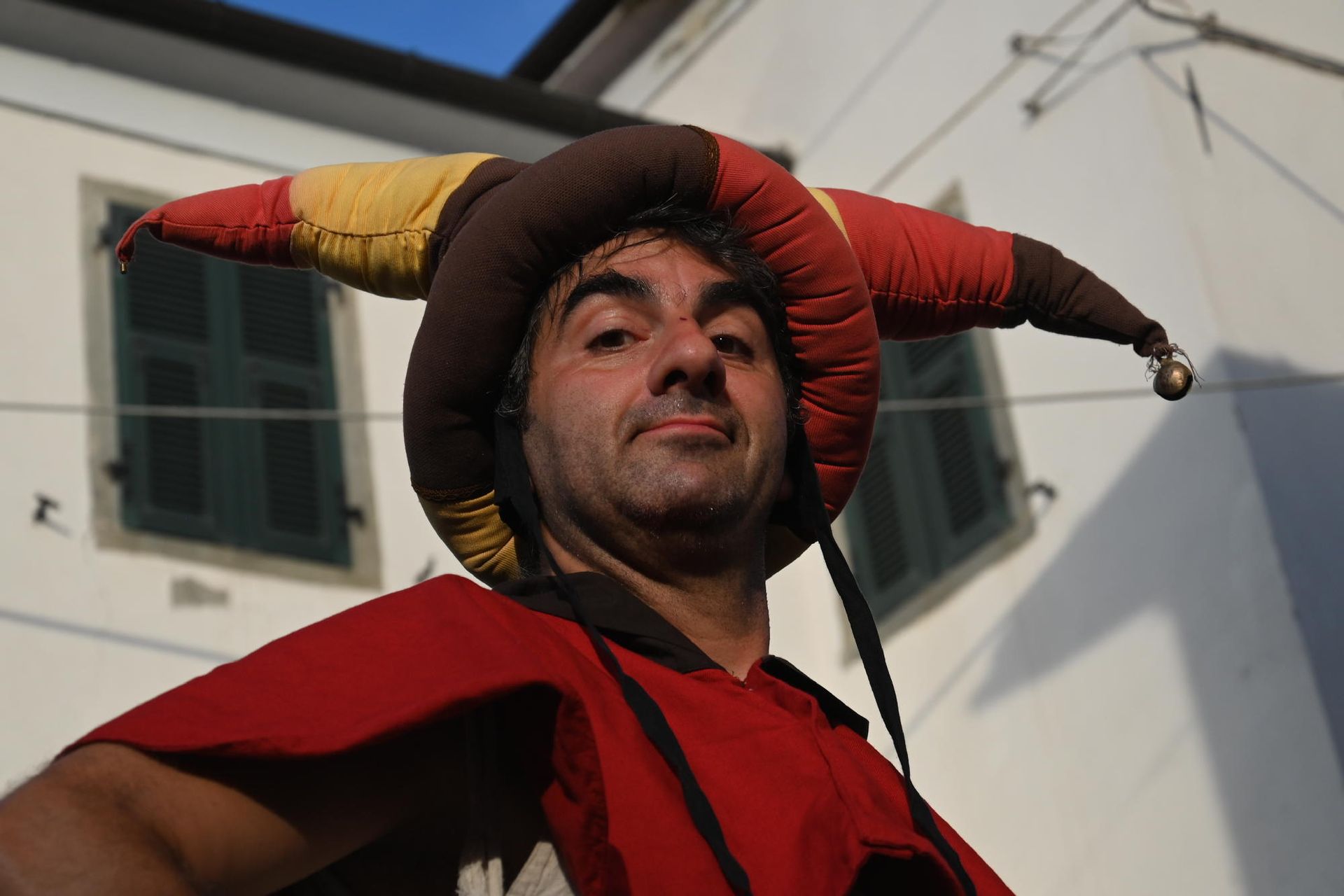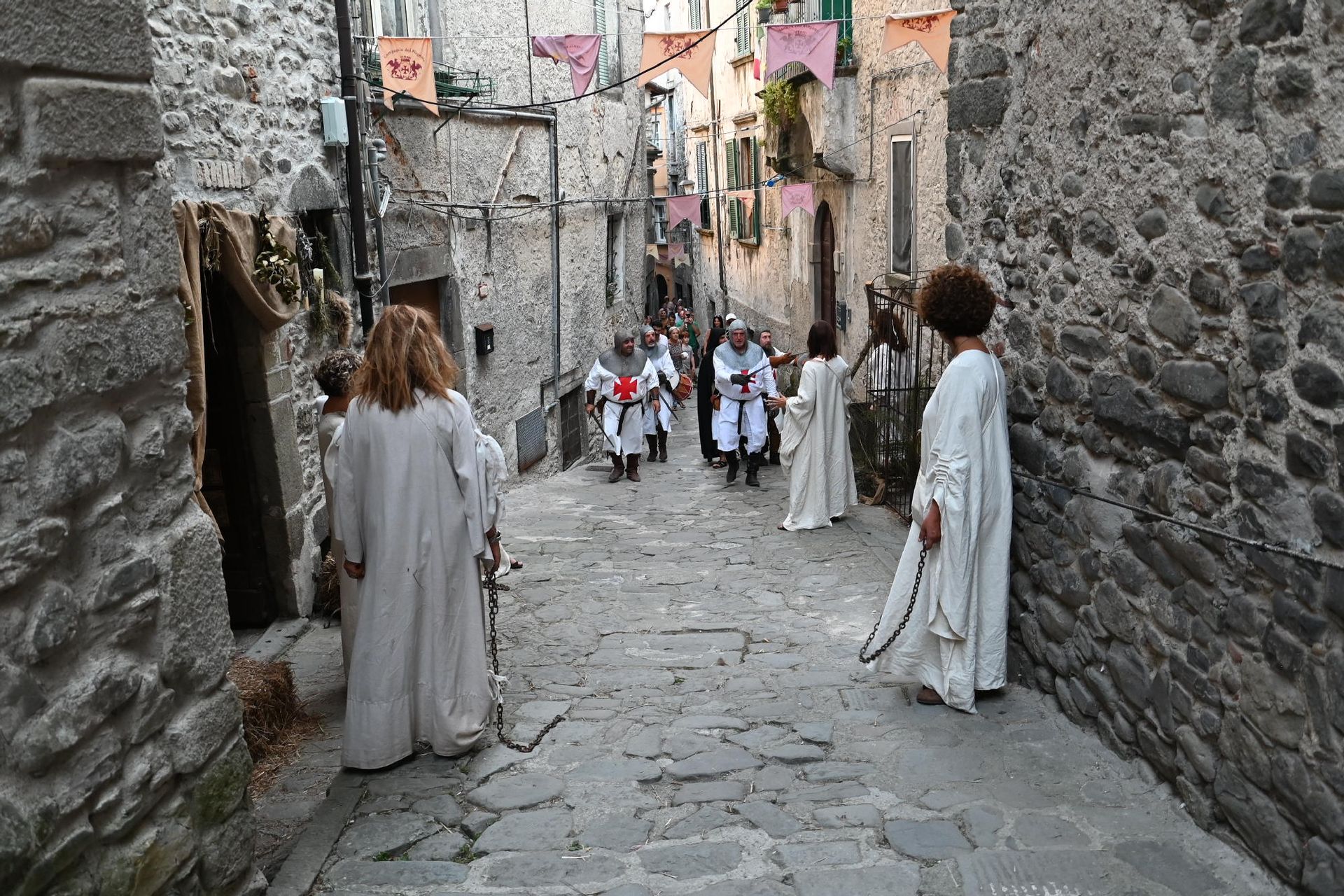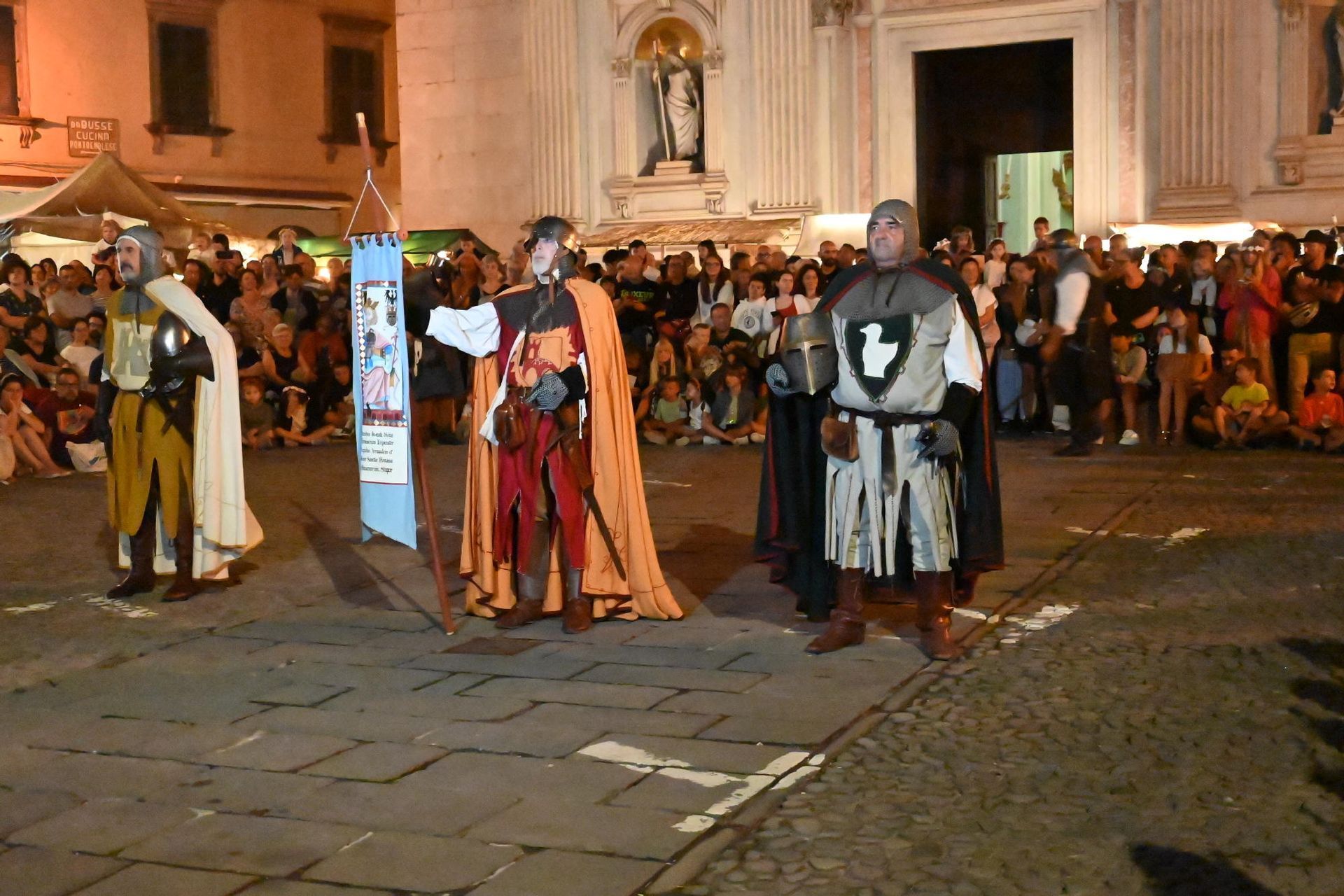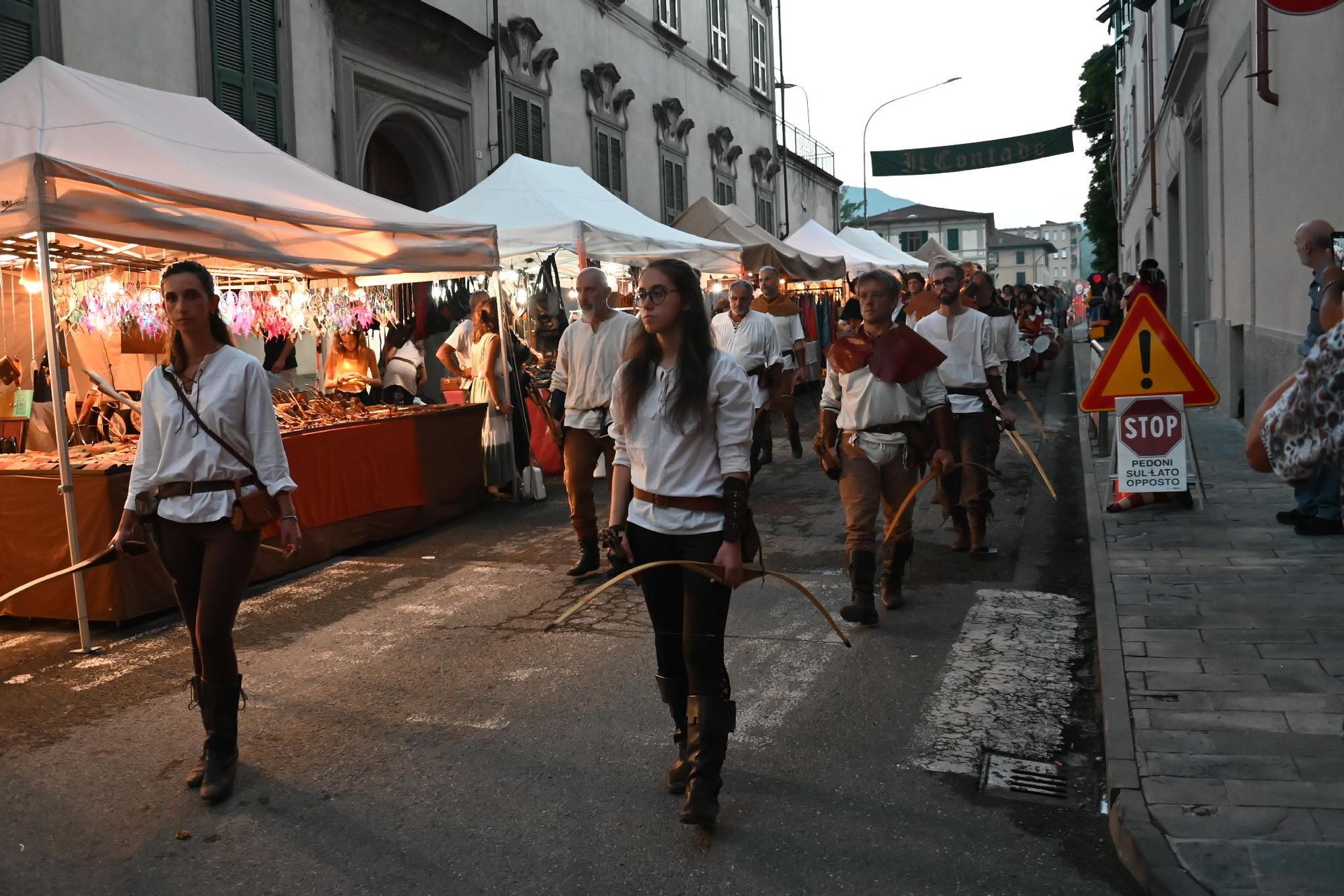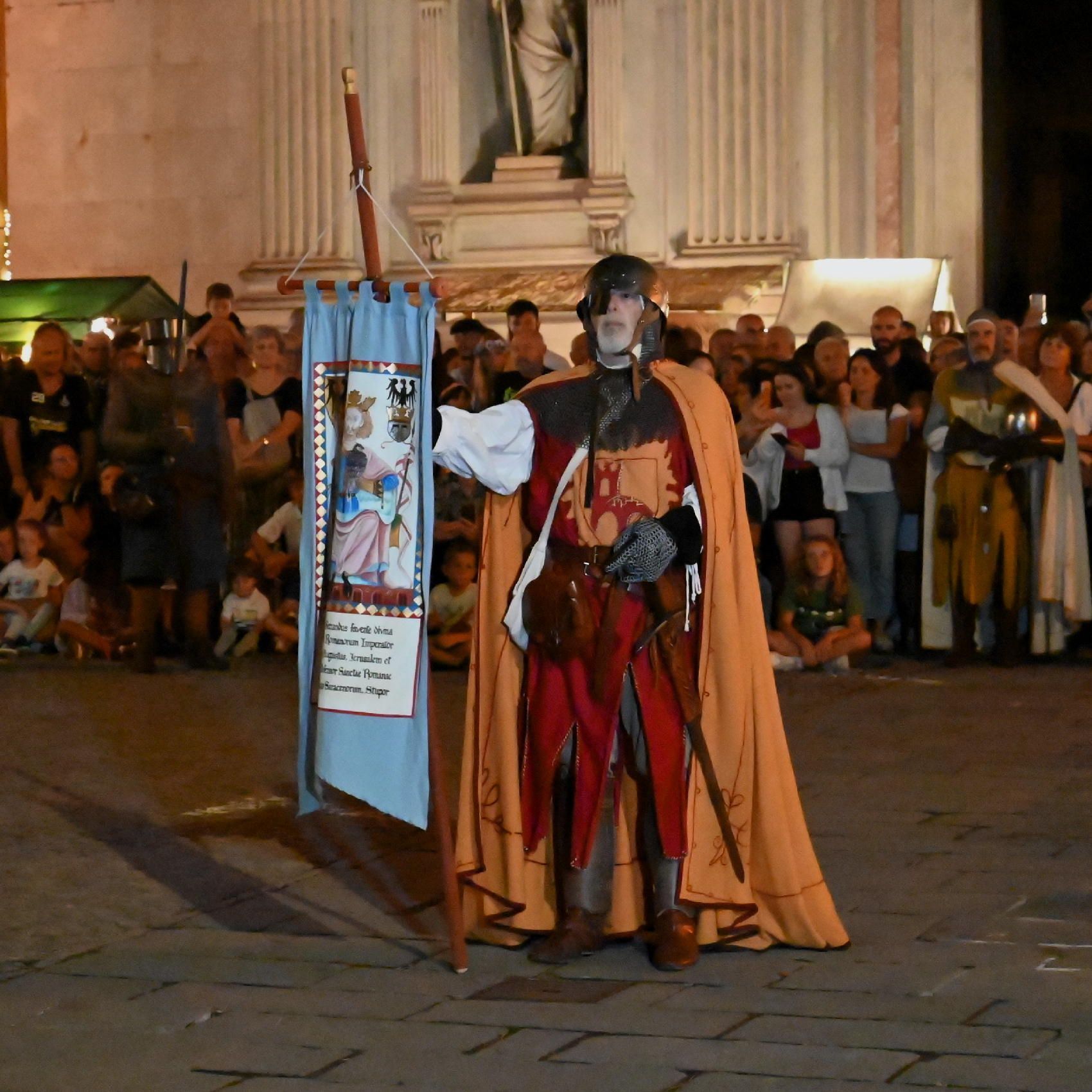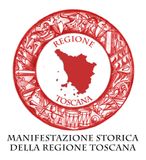The protagonists of Medievalis in Pontremoli

The heart of Medievalis
Medievalis, thanks to the passion of its residents and those who have chosen to take part over the years, is an event that every August attracts numerous tourists and visitors from all the surrounding areas, in a unique atmosphere reminiscent of times past.
If you would like to be part of it too, discover the heart of Medievalis, composed of figurants, archers, flag throwers, dancers, armigers, and more. Contact us to join!

The Musicians
In the Middle Ages, drummers and trumpeters were a fundamental part of processions and armies, as they led with the rhythmic sound of marches, and their presence was indispensable in every sector of the army. Drummers were frequently present, and the trumpet was unique throughout the formation, following the commander's orders. Over time, drummers became more advanced and sophisticated, until they were replaced by our Musicians of Pontremoli, who use evocative choreography to accompany the Flag Throwers' exercises and set the rhythm of the flag movements.
Our musicians harness the energy and rhythm of the music to create an engaging and unique spectacle that captures the audience's attention and leaves them breathless.
The costumes worn and the instruments used are the result of meticulous historical research: the drums are made with wooden barrels and rope ties, just as was used in the Lunigiana courts of the 13th century.

The Flag Throwers
The flag throwers of Pontremoli are a group that carries on the ancient art of flag-throwing, a symbol of civic pride and a fundamental tactical element during combat.
The presence of flags among the troops served as a point of reference during exchanges, and the movement of the flags recalls the moment of danger when it is necessary to prevent the enemy from taking possession of them. Today, the flag throwers of Pontremoli have developed exercises for individuals, pairs, small teams (4 people), and large teams (8 people), providing a spectacular and enchanting show.
This martial and elegant youth stands firm in its strength, vibrant and noble, and celebrates the ancient aesthetics of flags through a festive atmosphere.
Our Flag Throwers Group of Pontremoli offers a unique and evocative experience, where you can learn and appreciate the history and beauty of flags.

The Dances
The dances of Pontremoli encompass the magic and tradition of a bygone era, when music and dance were the most noble and refined forms of expression in Italian courts. Mediaeval dances, such as carols and farandoles, were simple but elegant, based on rhythmic steps and repeated figures that were performed in circles or lines, involving all the people who joined hands.
Music and dance reflect that ideal of beauty and harmony that throughout the Humanism had characterised Italian courts, and which had its roots in the images of "good governance" and the idealisation of social and love life that since the 14th century had been described in many ways: from the frescoes of Ambrogio Lorenzetti in the public palace of Siena to cassone paintings, depicting scenes of private and public parties, which are one of the most fascinating testimonies of social life in the Italian Middle Ages and the Renaissance.
Our Dance sector consists of men and women who reenact mediaeval dances, interpreting the music of the era and following ancient traditions.

The Figurants
The figurants of Pontremoli stand out due to the enormous variety of social categories represented. During the processions, municipal authorities, clergy, and noblemen proudly don sumptuous garments modeled after the attire of the most important mediaeval families.
Alongside them, merchants, peasants, wet nurses, and artisans proudly display their traditional clothing. All of this creates a unique and engaging atmosphere that allows spectators to authentically and suggestively relive the mediaeval era. Undoubtedly, the figurants of Pontremoli are one of the main reasons why this city is so beloved and visited by tourists from all around the world.

The Archers
In the 12th-13th century, formations of archers were capable of releasing thousands of arrows within moments; each archer could fire up to ten to twelve arrows per minute. Unable to afford a horse, servants, and armor (all of which were reserved for more or less affluent nobles), they equipped themselves as best as they could. In addition to bows and arrows, they armed themselves with daggers or axes in case they had to engage in close combat with the enemy. In mediaeval Italy, bows, made of yew wood, were curved at the ends to achieve greater speed and energy without overburdening the effort required to shoot the arrow.ù
Our archers perform during historical reenactments in archery contests and shooting demonstrations. In mediaeval society, it was divided into three parts: the "Oratores," meaning the clergy, the "Laboratores," all those who worked, and the "Bellatores," meaning the men-at-arms!

The Armigers
In the Middle Ages, society was divided into three parts: the "Oratores," meaning the clergy, the "Laboratores," all those who worked, and the "Bellatores," meaning the men-at-arms! The Armigers of C.d.P. recreate the atmosphere of the chivalrous world of the 13th century in every shade.
Meticulous and constant research, in close collaboration with our Historical Commission, passion, and constant training, enables the group to present a show rich in emotions and magic, never forgetting historical accuracy.
Whether as Templars or Hospitallers or as infantrymen or municipal soldiers, the Armigers wear costumes and use weapons and equipment studied down to the smallest detail, offering the public the opportunity to relive the Middle Ages by witnessing exercises with weapons, duels, and the highly dramatic spectacle of the exchange of flaming blades, making the entire experience unforgettable!

The Procession
The historical procession of the Compagnia del Piagnaro during the Medievalis event is a true celebration of characters and period costumes. With approximately 300 figurants, the procession is truly unique and never fails to inspire admiration and enthusiasm from all who watch it. The banner, a symbol of the group, is proudly carried by the Banner-Bearer accompanied by the Templar Armigers, Archers, Musicians, Ladies, and Wet Nurses with their children. Among the participants, you can find noble couples, monks and bishops, the Banner of the Free Municipality, community members, the Notary, and the Ambassador.
The Capodieci, Vicar, and pages accompanying the Podesta with the Lady are not to be missed. Even the Emperors have their escort of Archers, and the people's Wet Nurses arrive with their children. The crowd comes alive with the arrival of commoners, artisans, minstrels, jesters, acrobats, and belly dancers. In short, the historical procession is a unique experience that transports you back in time to
experience the charm and
magic of the Middle Ages.
Discover the charm of Medievalis
Visit Medievalis and immerse yourself in a mediaeval atmosphere



